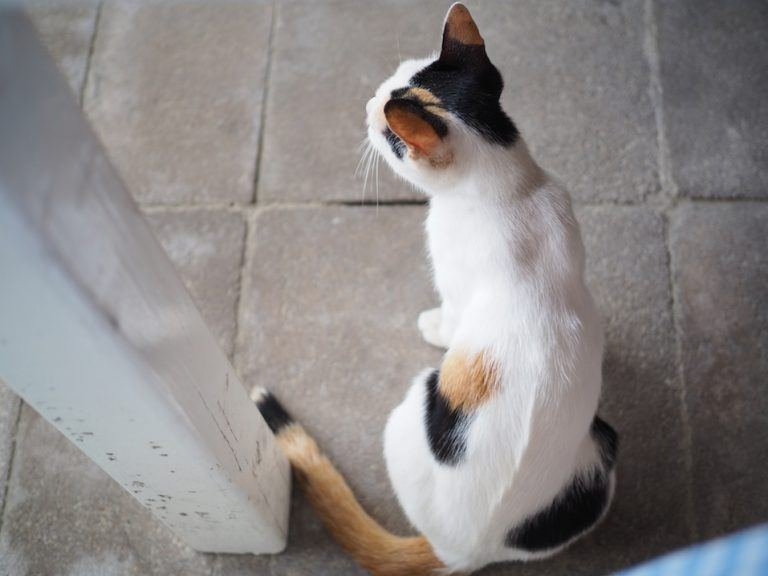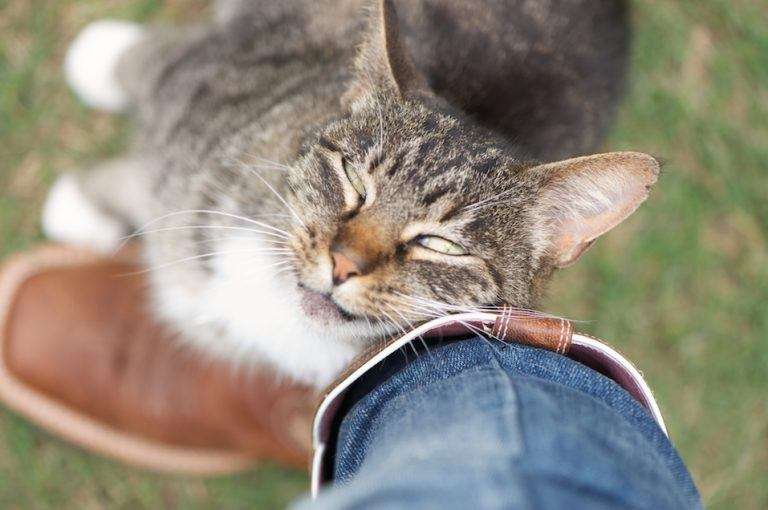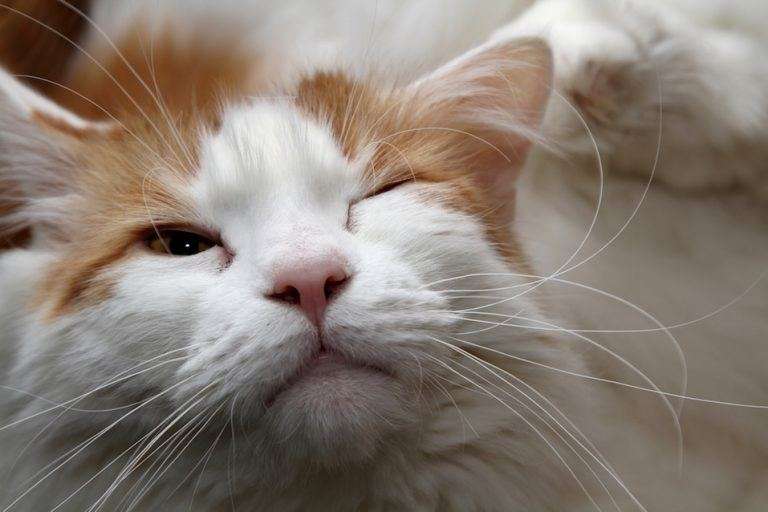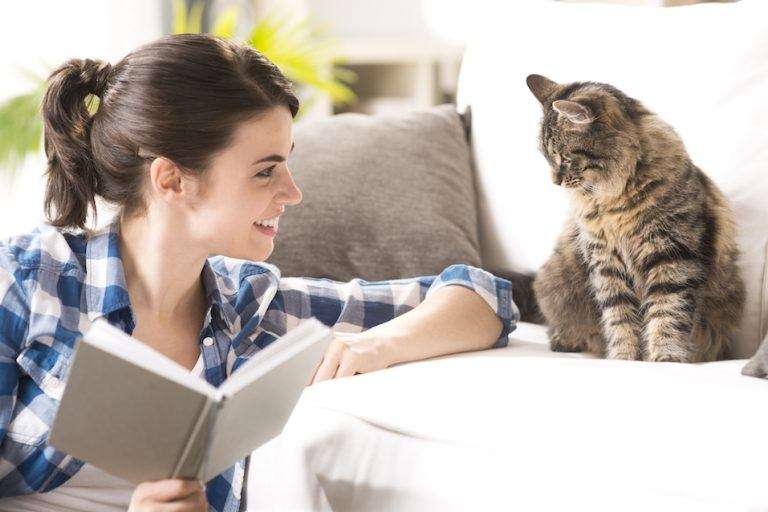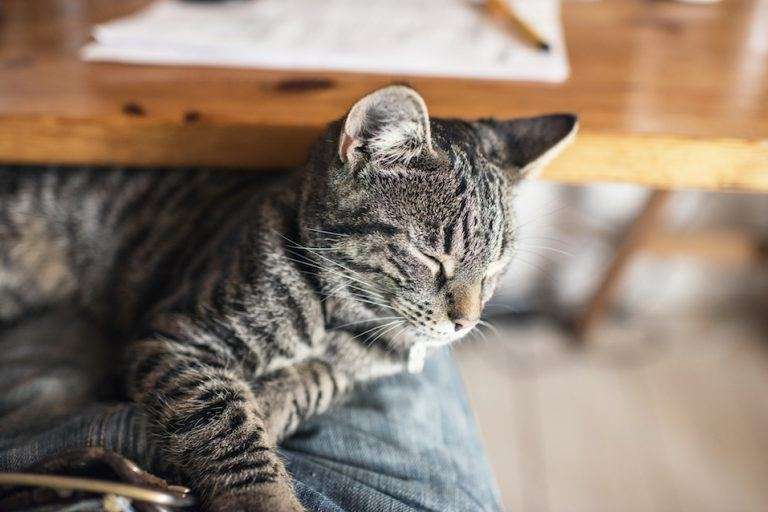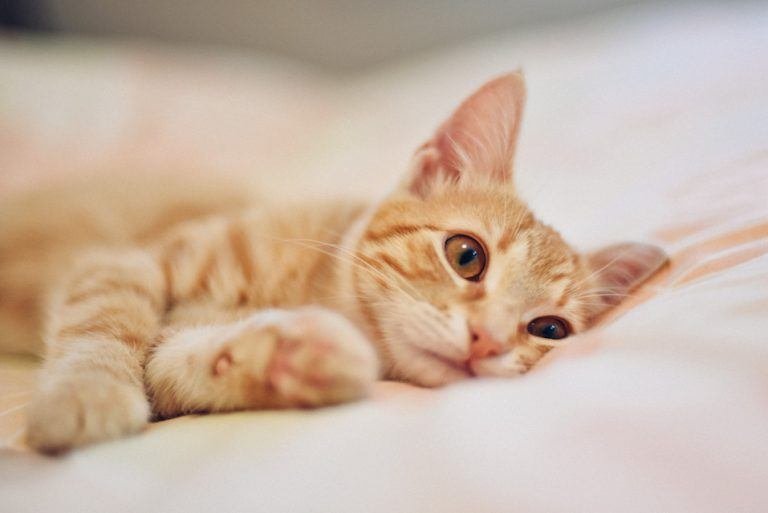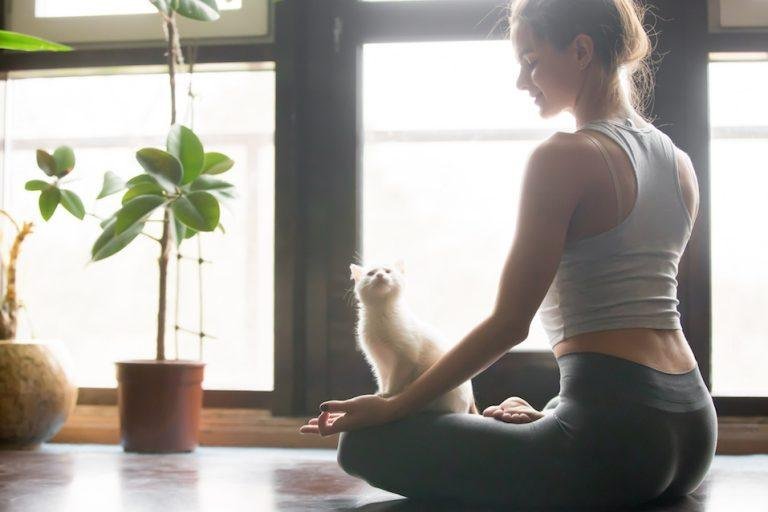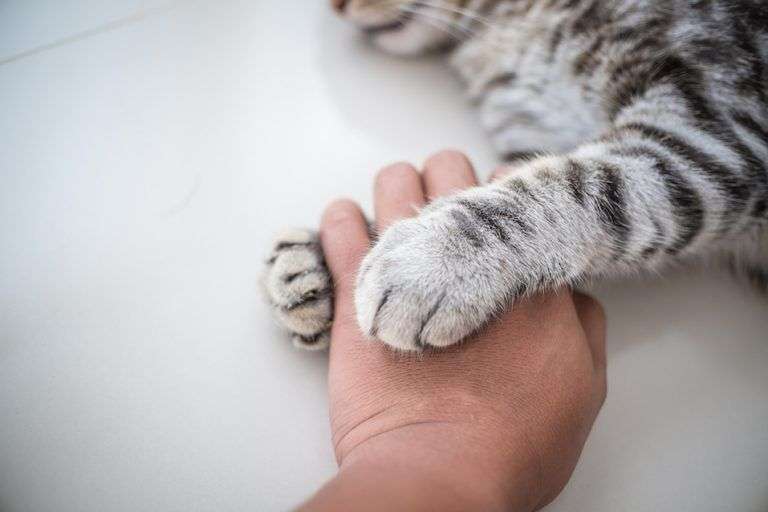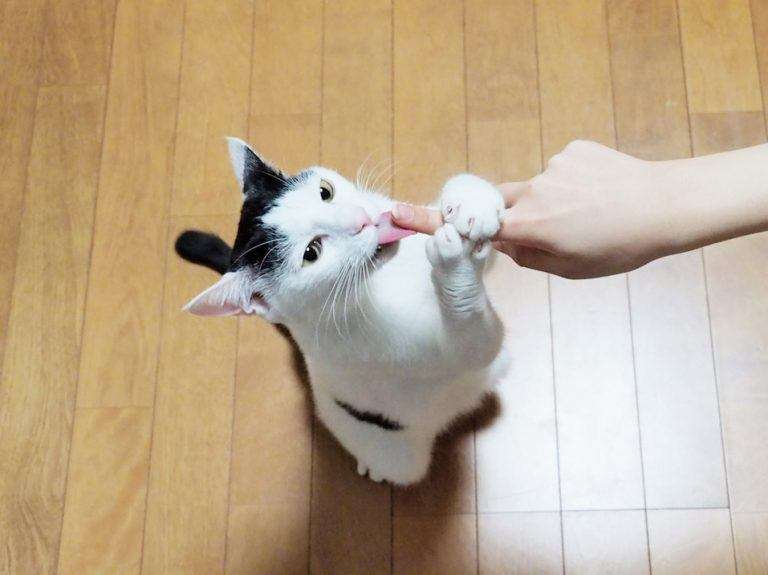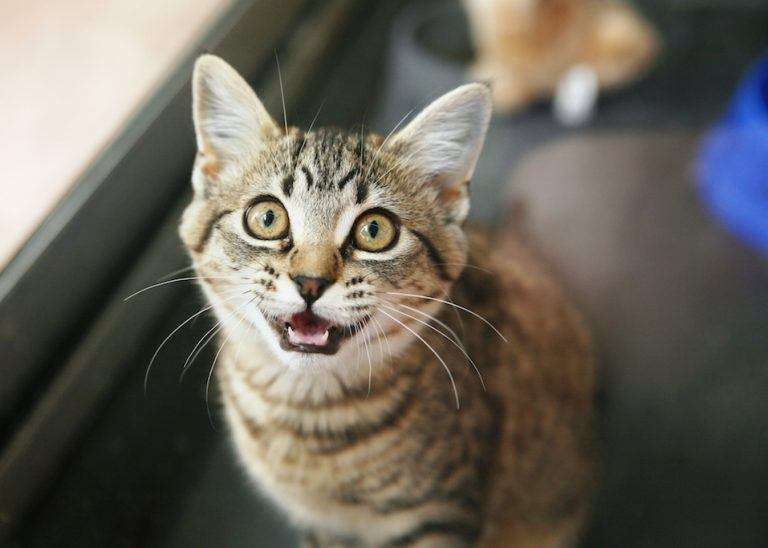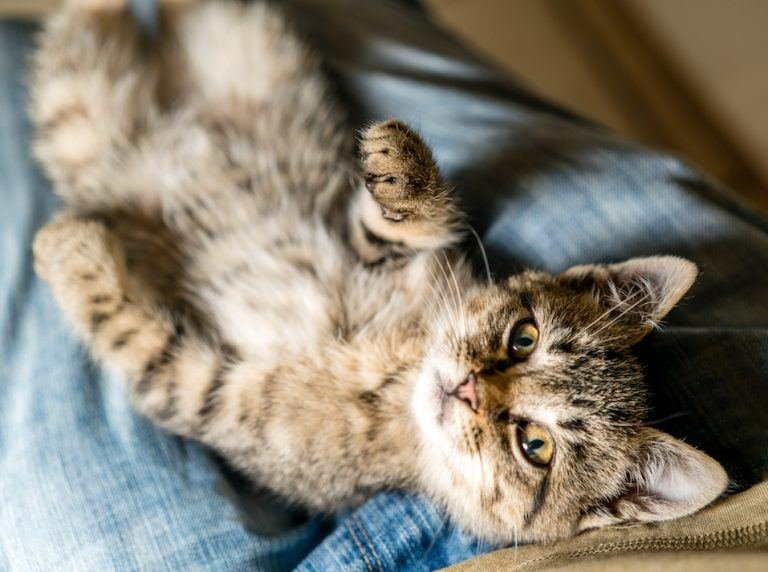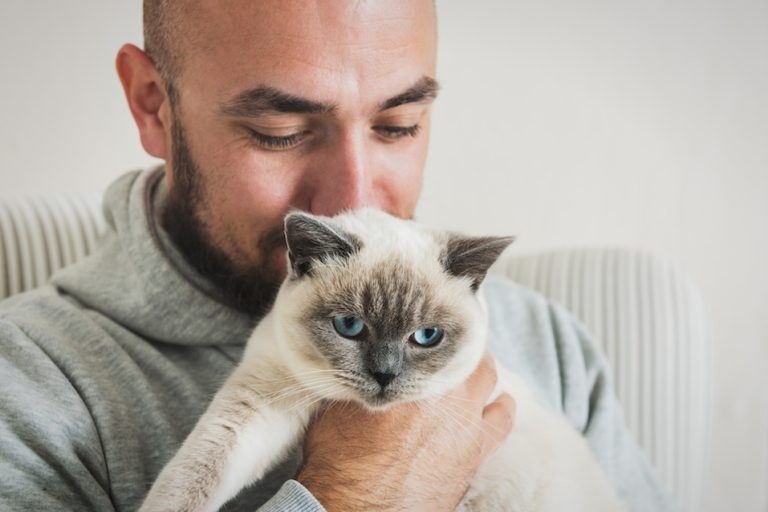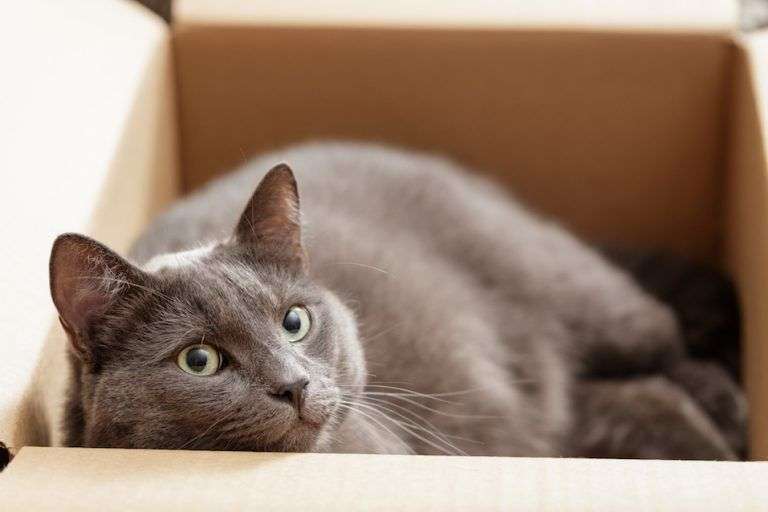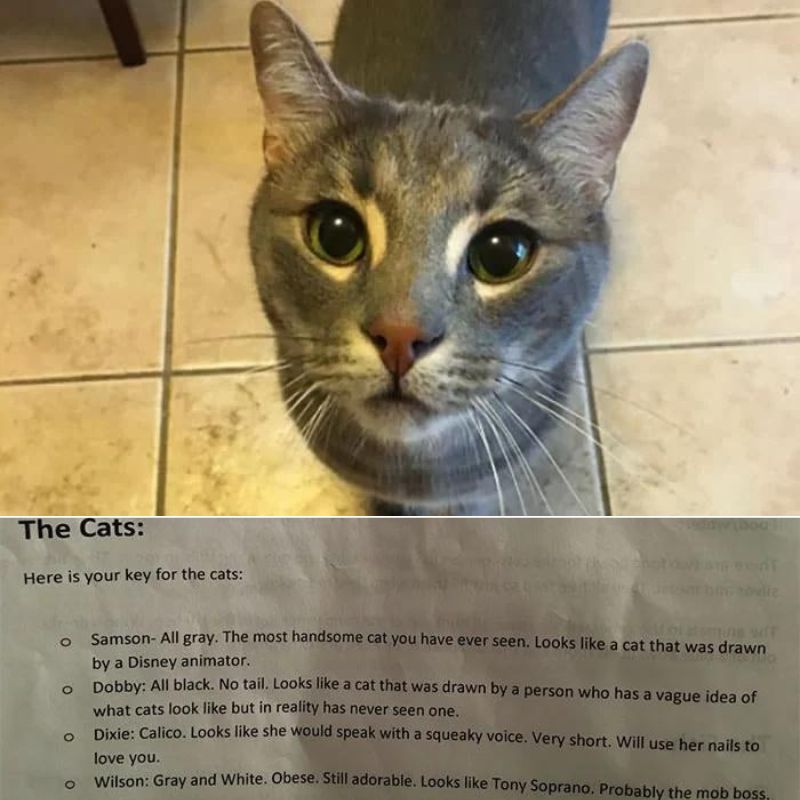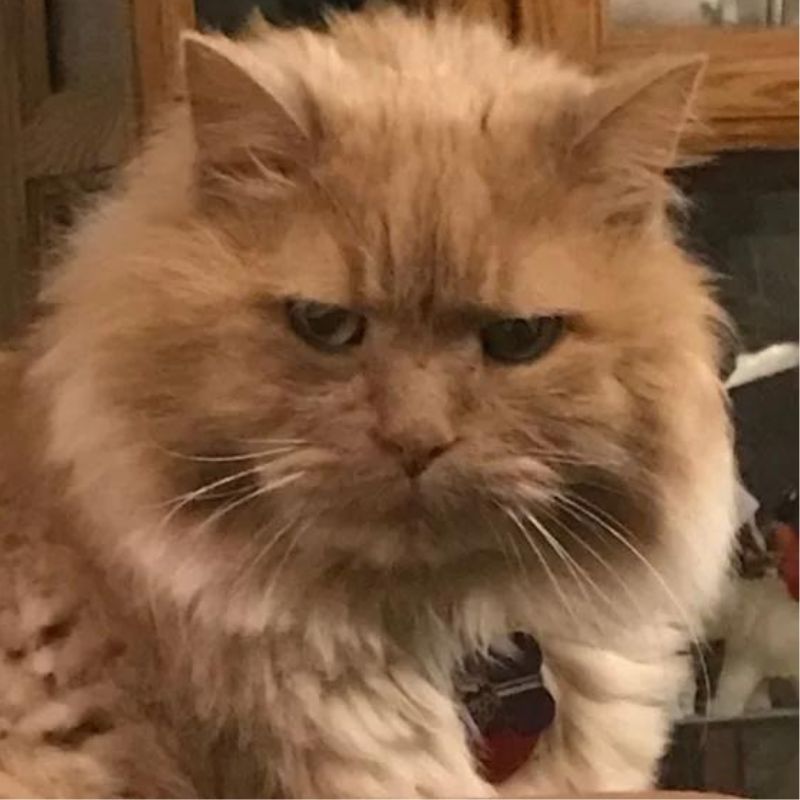When you take a cat home, he becomes a part of your family. He rapidly figures out the best places to nap, finds the ideal perch for watching birds and squirrels, and also determines the best way to get you to give him food and treats. However, another fun thing happens: You have become a cat owner. That means you’re completely responsible for that stinky litter box, of course. However, it also means you become obsessed with figuring out what your cat is thinking.
You’ll most likely find yourself constantly guessing at why your cat is meowing or what she wants when she stares you down from way across the room. And every now and then, you’ll likely find yourself wondering whether your cat actually loves you. Despite their infamous aloofness, cats actually are indeed capable of love.
Here are the ways his behavior might tell you he really does adore you.
1. He shows you his whole butt
One of the most surprising ways your cat may show his affection for you? Putting his furry little behind in your face. The Spruce characterizes this behavior calling it “a back-handed feline compliment.” When cats greet each other for the very first time, they sniff each other’s faces and necks to say hello. Then, they might sniff each other’s sides and finally their hindquarters, beneath a raised tail. Your cat doesn’t actually expect you to sniff his butt – but then again, maybe he does. However, the fact that he’s showing you that part of his body is a major vote of confidence in his trust for you.
2. He rubs his face up against you
Vox reported many cat owners interpret it as a sign of affection when their cats rub up against their legs and ankles. “Many cats, for instance, will rub up against the leg of their owner (or another human) when the person enters a room,” Vox goes onto explain.
You just might think your cat is saying he loves you when he rubs against your legs. That may be true. However, he’s also signaling that he regards you as a non-hostile cat, according to The New York Times. And as Vox also explains, “Many researchers interpret this as an attempt, by the cat, to spread his or her scent — as a way to mark territory.” In other words, he’s saying you belong to him.
3. He gives you the ‘slow blink’
Yet another common way cats show their affection for the people around them? The infamous “slow blink.” VetStreet reported when cats interact with people whom they don’t feel threatened by, they communicate that they’re actually quite comfortable around you with this characteristic eye movement. Your cat will look at you and slowly blink his eyes, leaving his eyes closed or almost closed for a several seconds. A cat who slow blinks at you still might not want you to pet him just yet, but he’s definitely signaling he’s comfortable around you.
4. He responds to all of your emotions
If you believe the common notion that cats are passive-aggressive or even narcissistic, you may be surprised to learn cats can pick up on how their humans are feeling. The BBC reported according to a recent study, cats actually behave differently when their owners are smiling than when they are frowning.
Cats respond to their smiling owner with positive behaviors, such as purring, rubbing, or jumping into their owner’s lap. And they do indeed want to spend more time with a smiling owner than a frowning one. If your kitty seems to respond to your emotions, you probably aren’t imagining it. He’s most likely learned to read your facial expressions over time — even if he doesn’t exactly empathize at all with you.
5. Your cat kneads your lap or legs
Many cats knead by pushing their paws in and out of their owners’ legs or lap. It can get painful at times because the cat’s claws often get involved. However, the behavior might be a sign of your cat’s bond with you. Kittens learn to knead when their mothers nurse them because the actual movement can help stimulate the flow of milk. However, older cats persist in kneading to show their contentment or even to mark their owners with their personal scents using glands in their paws.
6. Kitty treats you like a cat
Owners of particularly independent cats might just assume because their kitties treat them just like any other feline, they don’t really have too much affection for the humans in their life. But the opposite might be true.
As National Geographic once reported, researchers have found cats don’t really socialize with people any differently than they do with other cats. They poke their tails in the air, rub around our legs, and sit beside us as they groom themselves. Cats use behaviors with us that they have learned with other cats. And that’s a true sign they want to communicate and bond with us — even if they don’t really make the distinction between cat and human.
7. He follows you around everywhere
Ever wondered just why your cat follows you around, even at those times when he doesn’t really want you to pet him or pick him up? He might just want some food. Or perhaps it’s that he wants to know what you’re doing. However, VetStreet notes even cats who don’t appreciate physical attention seem to show their affection by staying near their owners. If your kitty follows you around, he’s probably saying he likes and enjoys your companionship. Or at the very least, he’s reminding you his food bowl is empty.
8. He holds his tail just the right way
Your cat’s tail can always help you tell how he’s feeling. National Geographic has reported you have to take your cat’s entire body into account when you judge what his tail is saying. On a calm cat, a tail held straight up in the air with the tip hooked constitutes a friendly greeting. An aggressive cat holding his tail the same way might just simply be holding his tail straight up. A fearful cat will usually have an arched back and a tail held up and puffed out. A whipping tail on an alert cat usually signals nervousness or even potential aggression. Learn to pay closer attention to your cat’s tail, and you’ll learn to spot his most affectionate moods.
9. He purrs at the very right time and place
One of the best-kept secrets concerning cats is they don’t only purr when they’re happy. As Wired reported, nobody has actually determined for sure why cats purr. Cats seem to purr “when they’re pleased and feeling good. But that’s not always the case.” The publication goes on to add, “Some cats also purr when they’re hungry, injured, or frightened.” You might notice your cat purring at odd times. But if he’s lying in your lap and purring contentedly? That’s a pretty good sign that he’s saying, “I love you.”
10. He rolls all around on his back
Does your kitty ever roll around on his back, holding his paws up and exposing his belly? The Spruce reported that if he does, your cat probably wants your attention. A cat exposing his belly is definitely signaling he trusts you. However, he might not want you to rub his tummy. (If you do, he may grab your hand and rabbit-kick until you manage to pull away.) Rolling around also helps your cat to spread his scent all around your home. However, if you repeatedly see him stop, drop, and roll right in front of you, he’s probably saying you, “Pay attention to me!”
11. He licks your hands or face
Many cats lick their human’s’ hands, arms, toes, or even their faces. But why do they do that? And is that some display of affection? Animal Planet reported that being licked is the first tactile experience your cat remembers from his past as a kitten. “When your cat licks you, she’s cleaning you up and claiming you — just as she would for a feline friend or litter mate.”
Licking is truly comforting and soothing to a cat. So when your cat licks you, he’s actually showing you his affection. There are some cats that even take their grooming behaviors further, such as by “combing” their humans’ hair. Both licking and combing help to spread your kitty’s scent, creating a combined scent that identifies you as a family.
12. He gives you head butts
When your kitty walks up to you and head butts you, you’re probably left wondering what he’s saying or what he wants. As VetStreet reported, the behavior, technically named bunting, appears both in domesticated cats and also in their wild counterparts. Just as he does when he rubs his face against your leg, your cat head butts you to deposit his own pheromones on you. The behavior signals that your kitty is marking you as safe. In a way, that means it’s a sign he trusts you.
13. He meows to you
Adult cats only meow at people, rarely if ever at other cats, as the ASPCA reported. As a kitten, your cat probably meowed to his mother to let her know he was cold or hungry. However, once cats grow out of the kitten phase, they no longer meow at other cats. However, they continue to meow at people — this is probably because meowing gets them what they want. Your cat will certainly meow at you to greet you, to get your attention, to ask for food, or to be let in or out.
14. He chooses you over his own food
Not every cat owner is able to envision their kitty choosing attention over a meal. However, researchers have found given a choice, many cats will pick human companionship over food, toys, and other appealing smells.
More evidence cats love their people more than food? They don’t hold grudges if, let’s sat, you limit their food. Even if you don’t experiment on your cat, you can probably notice the signs that your cat loves you for more than your skill with the can opener or your generosity with the treat bag. If he pays attention to you, and not just the food that inside your hand, that’s one such sign your cat actually loves you.
15. Your cat sleeps in your lap
Cats have a well-deserved reputation as champion and expert nappers. Cats sleep an average of 15 hours each day. And although it may not exactly be a surprising sign of their affection for you, you can rest assured that a cat who decides to sleep on your lap is expressing his love for you. Cats typically choose to sleep in secure locations. So if your cat chooses to sleep in your lap he definitely trusts you.
16. He responds to the routines you have created for him
Even though your kitty doesn’t have the same social skills as a dog, domestic cats sincerely do want to bond with their humans. Both you and your cat have to work to understand each other. And the very best ways to bond with your cat include petting, playing, and food.
You can also create routines you repeat each time you leave and return to from your home. Say goodbye to your fur-baby when you leave. And saying hello when you return home again. Cats don’t need hours and hours of actual hands-on time with you each day. Just be sure you give your cat some quality time to bond with you each day.
17. He just acts like a cat acts
Simply by being a cat, your kitty uses thousands of years of instinct to interact with you. The Atlantic reported compared to many other animals, cats have changed but minimally in the domestication process. Cats domesticated themselves just about 9,500 years ago.
And although they still may not be totally dependent on humans, they certainly do seem to appreciate the way their owners tolerate their egotistical ways and indulge their more idiosyncratic behaviors. As The Atlantic noted, cats pretty much tamed themselves — which means in your kitty’s estimation, humans may actually be “a cat’s best friend.”

